Archaeological Institute of America
Deadline: December 1, 2025
Graduate students are the future of our profession and contribute substantially to the success of the Archaeological Institute of America’s Annual Meeting by delivering papers based on original research. Through its Graduate Student Paper Award, the Archaeological Institute of America recognizes this contribution and encourages outstanding research by students.
Eligibility and General Information
Eligible students are predoctoral students in any discipline related to archaeology who have had a paper accepted by the Program for the Annual Meeting Committee for presentation at the Annual Meeting of the AIA and who have checked the box labeled “Graduate student paper award” on the Open Session Submission Form that reads, “I am a graduate student and sole author of this paper and wish to be considered for the Graduate Student Paper Award.” If you are presenting as part of a session, you need to remind your session chair to check this box for you when they submit all of the session materials. Only graduate students who have a paper accepted by the Program for the Annual Meeting Committee and have checked the box on the Submission Form will be eligible for the award. Accepted papers should then be submitted by email and in their entirety to the Graduate Student Paper Award Committee for award consideration. All submissions are by self-nomination and remain anonymous throughout the award selection process. The full written paper along with images must be received by the award deadline. In substance and form, the paper that is delivered should be the same as that submitted.
The written paper and its oral and visual presentation will be judged for (1) originality, (2) concision and (3) delivery. Assessment of the presentation will not be affected either by the technological format of presentation or by circumstances beyond the presenter’s control, but rather it will be judged by the organization and rhetorical delivery. The selection committee consists of faculty and scholars who are members of the AIA.
Co-authored papers: We encourage collaborative work between students and will consider co-authored papers when all contributors hold student status. We are not able to accept papers with a senior scholar as co-author (anyone holding a Ph.D. at the time of submission) since the committee cannot determine the amount of input from the student author(s).
The award includes a certificate of achievement. The winner will also receive complimentary meeting registration and two nights stay at the meeting hotel to attend the following year’s Annual Meeting, where they will be recognized at the Awards Ceremony.
Submission Requirements
**Text and images should be submitted by email in PDF format to the contact address below.**
Notifications Procedure
The committee will review nominations and make a decision by late January. This decision then needs to be approved by AIA governance. By late spring, AIA Staff will contact all nominees regarding the status of their nomination. The winner will be celebrated at the Awards Ceremony the following January.
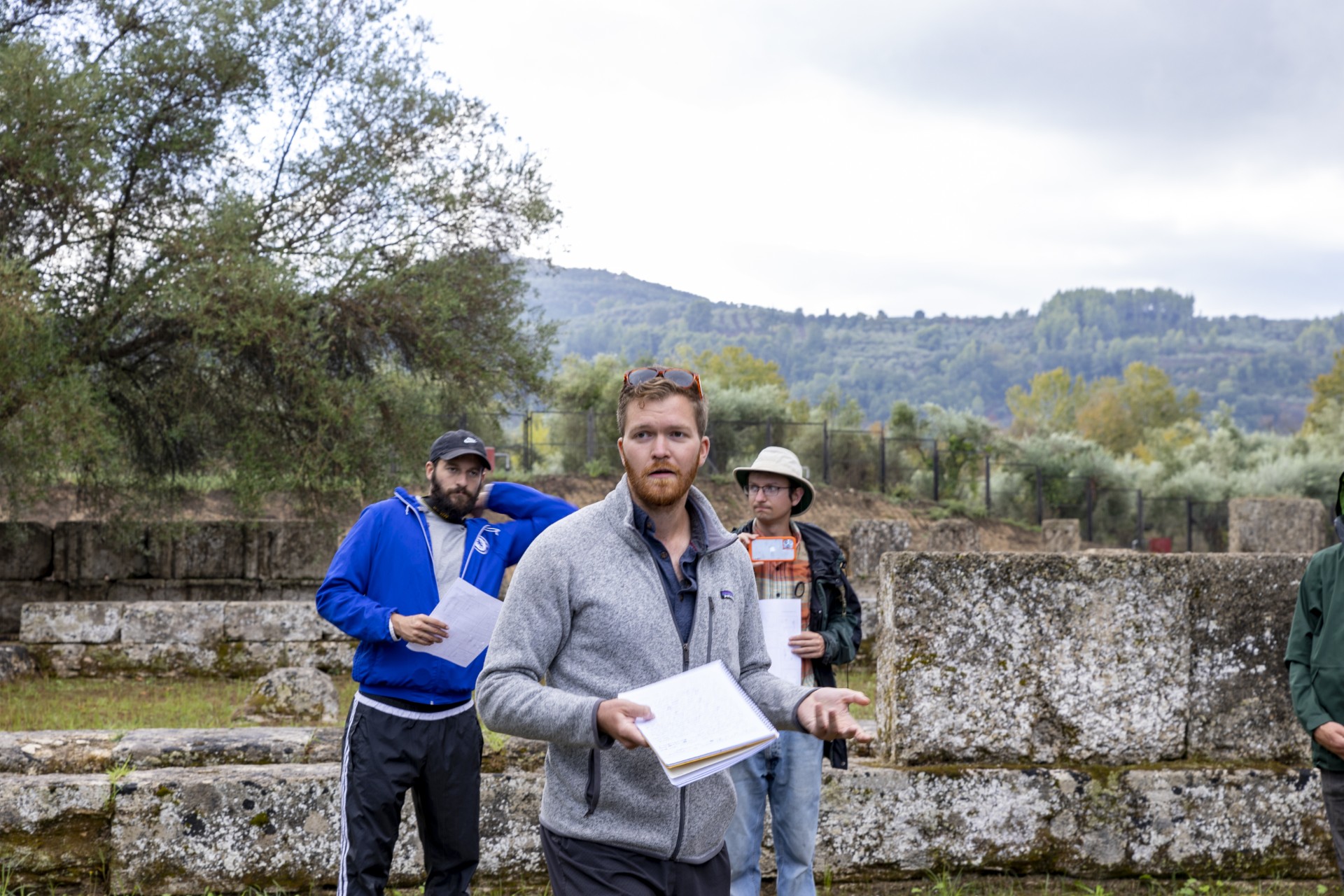
2025
Rutgers University
The Archaeological Institute of America is pleased to bestow one of two First Prizes for the 2025 Graduate Student Paper Award to Mr. Luke Madson (Rutgers University) for his paper, “Dekeleia and Laconizing Landscapes in Attica” presented at last year’s AIA Annual Meeting.
The paper “Dekeleia and Laconizing Landscapes in Attica” explores the fort at Dekeleia, built and garrisoned by the Spartans and their allies in 413 BCE. The author, whose dissertation research investigates the deme history of Dekeleia, identifies a pattern of cultural Laconism, or affiliation with the ethnic, ideological, political, and philosophical ideals of Sparta, at this site. The paper is strong in both writing and organization, and the author is particularly successful in connecting disparate bodies of evidence, ranging from literary to epigraphical to archaeological, into a cohesive argument for Dekeleia’s persistent affinity towards Sparta and Spartan cultural ideals as an antithesis to the pervasive polis-oriented, democratic framework of fifth century Athens. The Graduate Student Paper Award Committee commends the author for his original research and particularly for attention to connections between the written tradition and the physical landscape of the site of Dekeleia.
We are delighted to honor Mr. Madson with one of the 2025 Graduate Student Paper Awards.
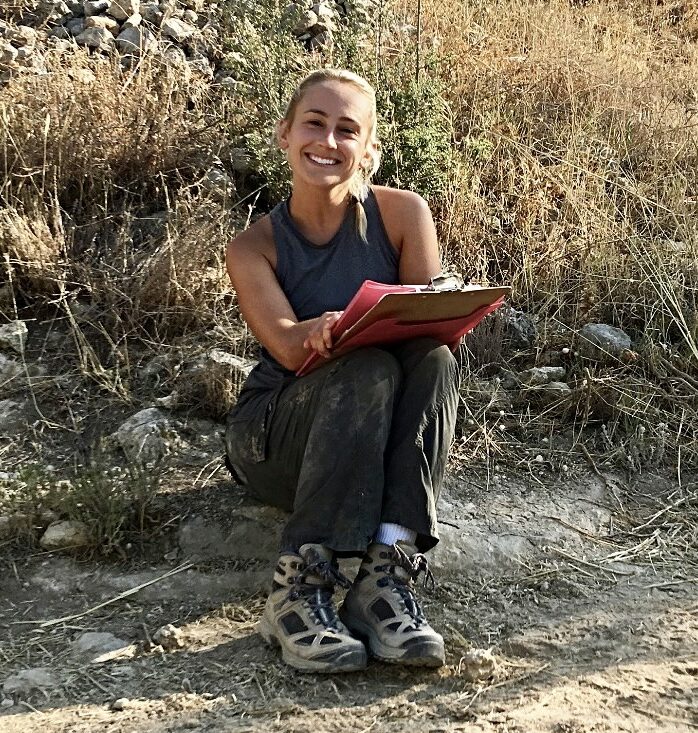
2025
University of California, Berkeley
The Archaeological Institute of America is pleased to bestow one of two First Prizes for the 2025 Graduate Student Paper Award to Ms. Sophie Cushman (University of California, Berkeley) for her paper, “On the Origin of the Chamber Tomb” presented at last year’s AIA Annual Meeting.
The paper “On the Origin of the Chamber Tomb” provided a new, multifaceted analysis of a funerary type that first appeared in the Argolid during the early Late Bronze Age, the chamber tomb. The author effectively combined analysis of published evidence with her own study of pottery from Wace’s chamber tombs at Mycenae in order to reach novel conclusions. Careful contextual analysis of funerary assemblages at Prosymna, which suggested that burial groups intentionally curated the earliest deposits in later periods, combined with redating of ceramics from chamber tombs at Mycenae enabled the author to argue that the absence of evidence for experimentation with the chamber tomb form in LH I at Mycenae may in fact be best interpreted as actual absence of that experimentation. The author highlighted the importance of individuals and groups outside of Mycenae as agents of innovation who contributed to the popularity of new burial practices in this era. The paper is commended for its clear organization, detailed analysis, and compelling argument.
We are delighted to honor Ms. Cushman with one of the 2025 Graduate Student Paper Awards.
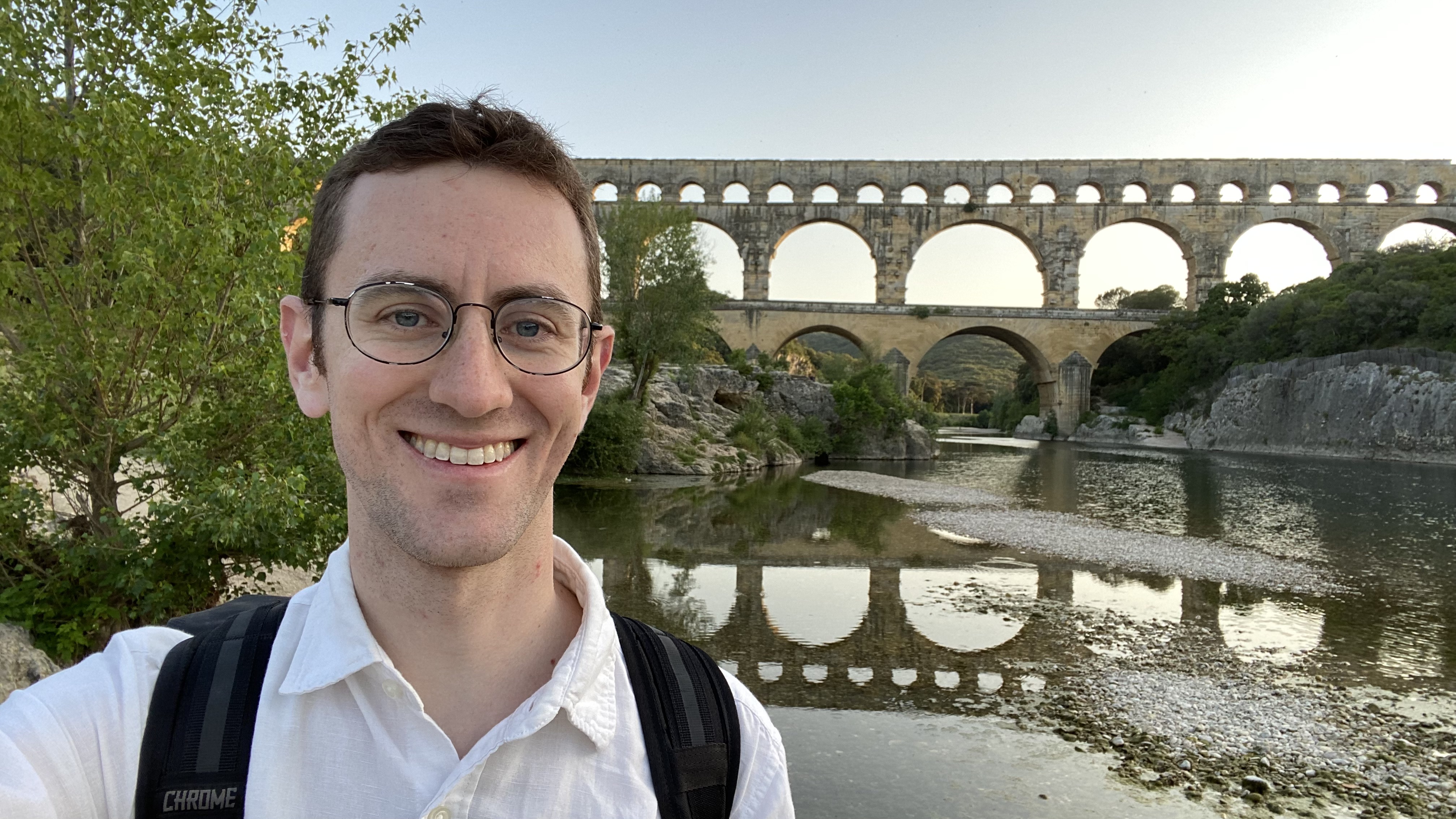
2024
University of Pennsylvania
The Archaeological Institute of America is pleased to bestow one of the two First Prizes for the 2024 Graduate Student Paper Award to Dr. John Sigmier (University of Pennsylvania) for his paper, “Local Expertise and Architectural Innovation in the Earth-Built Theaters of Roman Gaul” presented at last year’s Annual Meeting.
This paper displayed excellent command of a range of archaeological contexts, from Roman Gaul to ancient North America. The author presented results from a study of the theaters of Roman Gaul focusing on the construction techniques used to support such large and complex buildings, drawing on technical knowledge from similar engineering projects in North American contexts. The author’s conclusions upend previous biases that assumed inferior technical skills by the builders in the Roman provinces by revealing the challenging and complex constructions used to support theaters in Gaul. He showed the local expertise at play in these structures by comparison to the technical features and innovative design of other structures in pre-Roman Gaul. This paper is commended for its original results, excellent organization, and clear argumentation.
We are delighted to honor Dr. Sigmier with one the 2024 Graduate Student Paper Awards.
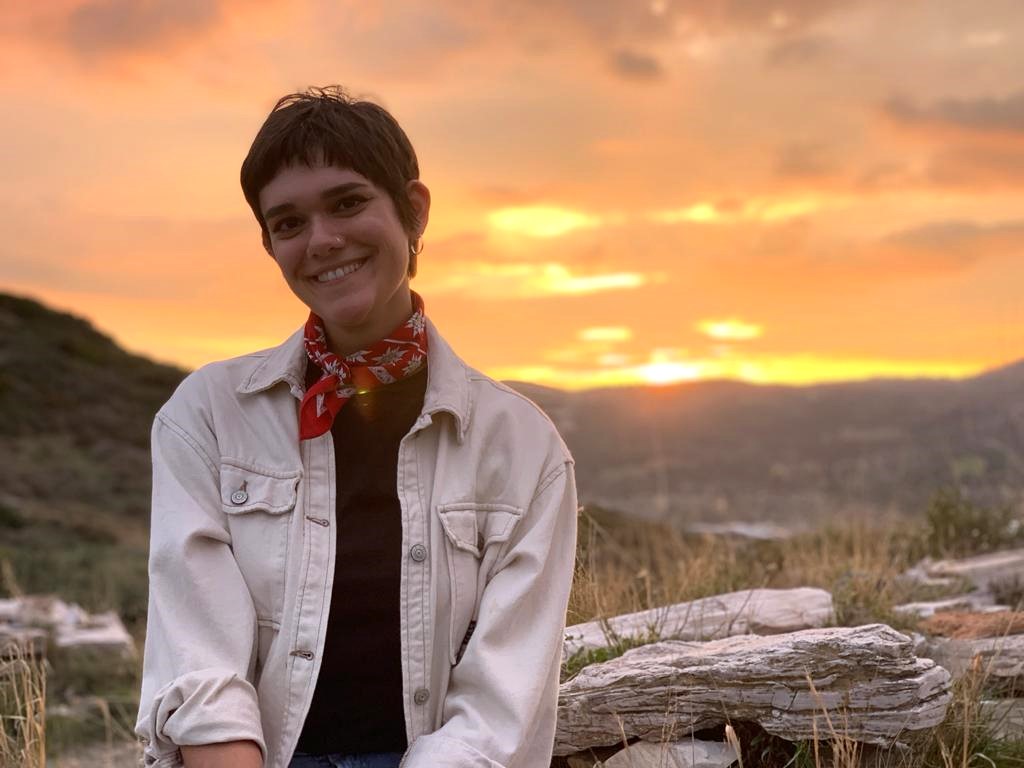
2024
University of Virginia
The Archaeological Institute of America is pleased to bestow one of the two First Prizes for the 2024 Graduate Student Paper Award to Ms. Abigail Bradford (University of Virginia) for her paper, “Musical Instruments from the South Stoa at Corinth: Type, Function, and Chronology” presented at last year’s Annual Meeting.
This paper showed the fruitful and innovative results of a fresh look at archaeological material from old excavations. Using a body of material from the South Stoa at Corinth, the author revealed a number of previously unknown fragments of musical instruments that add a great deal to our understanding of such objects from antiquity. Not only were the results fascinating, they also opened new windows onto our understanding of the soundscapes of antiquity. This paper is commended for its meticulous study of archaeological fragments to produce new results and the engaging presentation of this material, as well as the author’s deft handling of questions from the audience
We are delighted to honor Ms. Bradford with one of the 2024 Graduate Student Paper Awards.
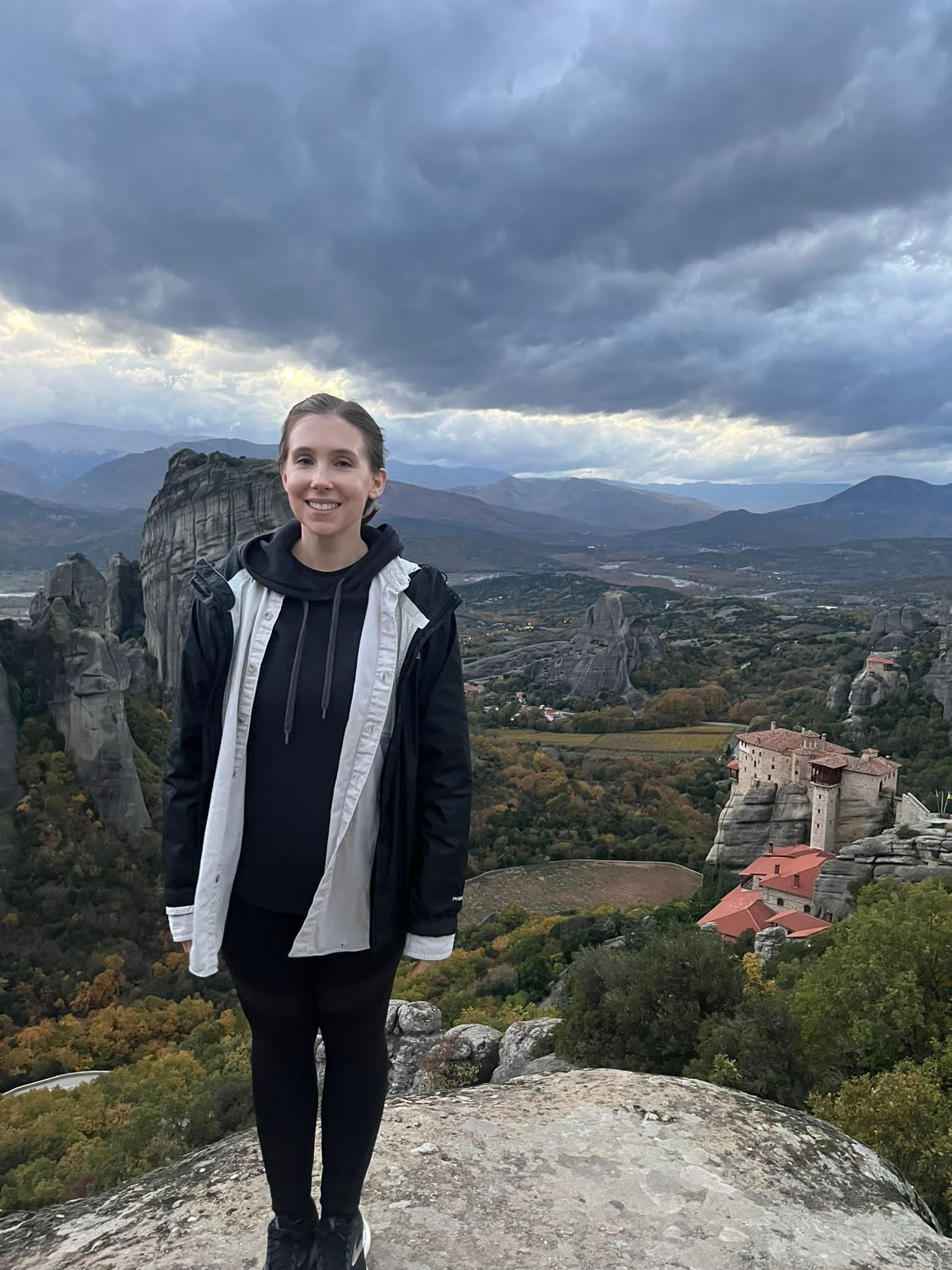
2023
The Archaeological Institute of America is pleased to award the First Prize for the 2023 Graduate Student Paper Award to Ms. Emily C. Mohr (Duke University) for the paper entitled “Nikandre Who Contends with Men: A Reconsideration of Nikandre’s Dedication on Delos” presented at last year’s Annual Meeting.
This paper was well organized, strongly argued, and beautifully illustrated. Taking the well-known Nikandre statue as the subject of the paper, Ms. Mohr offers a new translation of its dedicatory inscription, suggesting that Nikandre was honored as a woman with an unusual degree of prestige for a female, even offering that her name itself is a feminized form of a name more often associated with men based on its use in literary and epigraphical sources. The paper further contextualizes the statue in its original position in close proximity to a temple that was possibly dedicated to both Artemis and Apollo.
The Graduate Student Paper Award Committee was particularly impressed with the originality of research in offering a new translation and interpretation of this sculpture and its inscription. The suggestion of a broadened, less rigidly defined view of gender roles in early Archaic Greece is an important contribution to the field. The author’s use of interdisciplinary evidence, including architectural contexts, sculptural styles, and epigraphic forms is commendable. We look forward to further contributions from this scholar in the future.
We are delighted to honor Ms. Emily C. Mohr with the First Prize Graduate Student Paper Award.
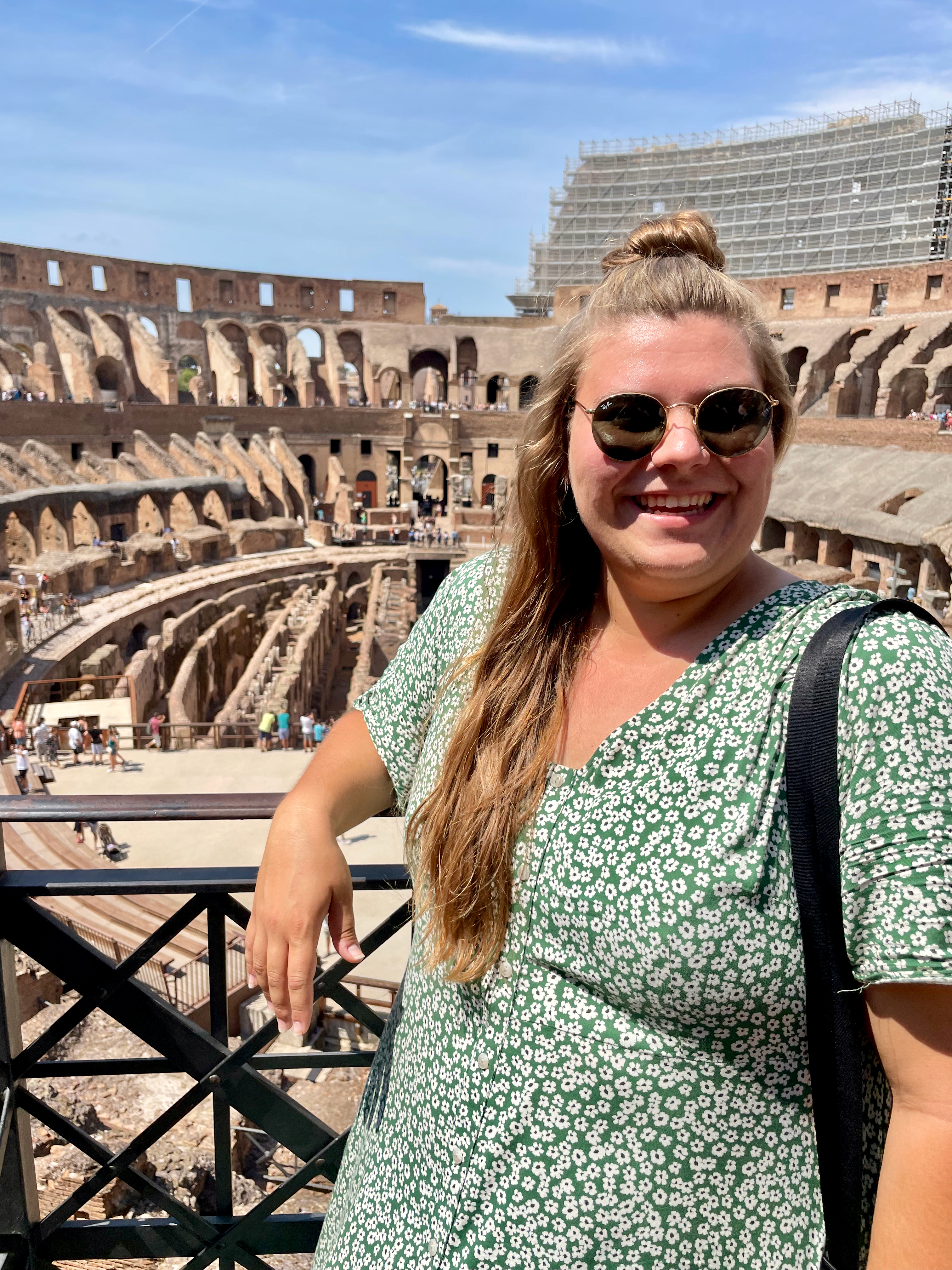
2023
The Archaeological Institute of America is pleased to bestow an Honorable Mention for the 2023 Graduate Student Paper Award to Brigitte Keslinke (University of Pennsylvania) for her paper “Consuming the State: The Topography of Food Security in 2nd century CE Rome” presented at last year’s Annual Meeting.
The paper presented a fresh look at the spaces in the city of Rome that were integral to the food security of the population of the capital. The author’s compilation of many peripheral and rarely discussed spaces was commendable. The award committee was particularly impressed with the authoritative and mature presentation of the research, as well as the dexterous handling of questions at the end of the talk. The author directed a lively discussion and answered several questions with confidence, showing extensive knowledge of the subject and ability to move into subjects tangentially related to her topic. The presentation was a model for others to follow.
We are delighted to honor Ms. Keslinke with an Honorable Mention for the Graduate Student Paper Award.
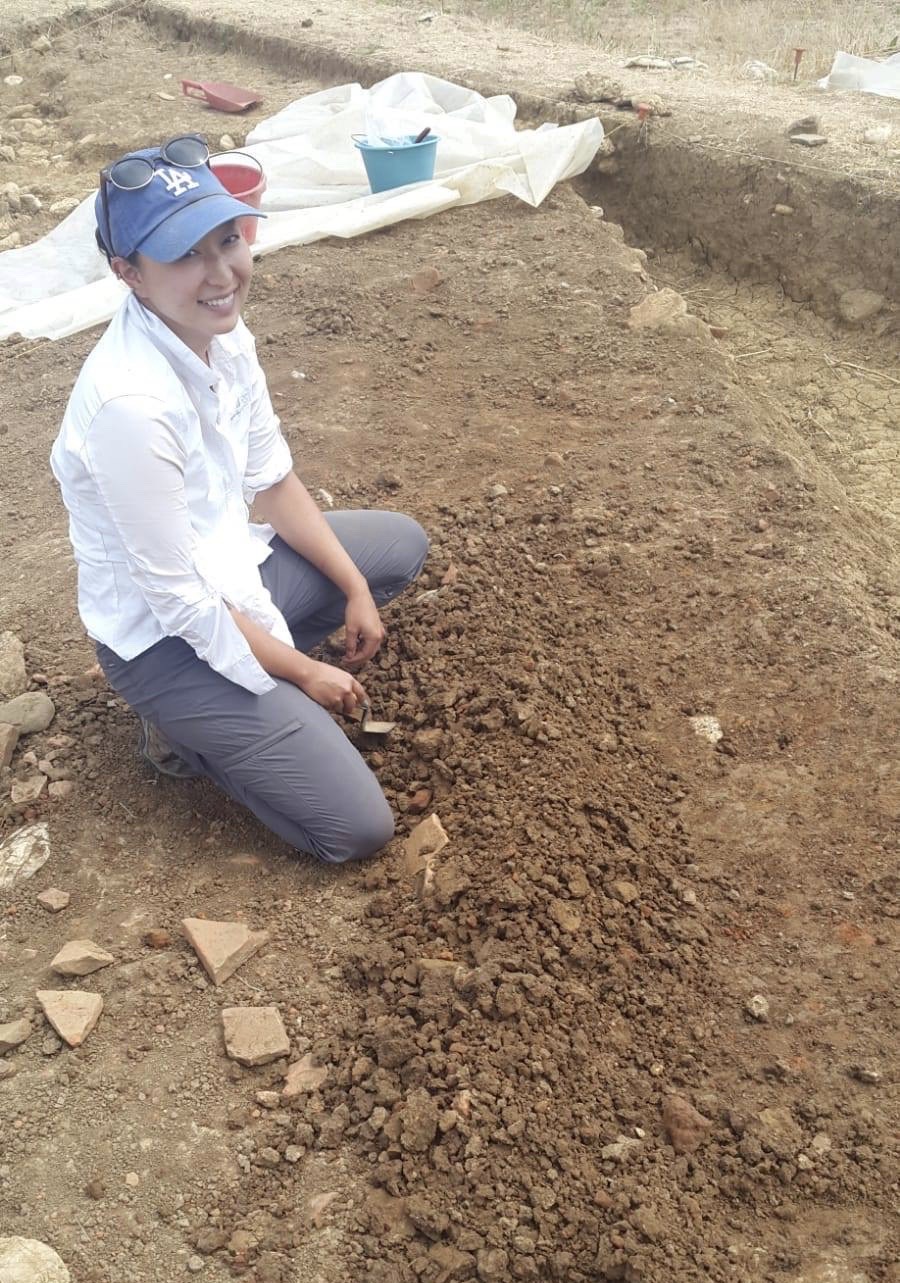
2022
The Archaeological Institute of America is pleased to bestow one of the two First Prizes for the 2022 Graduate Student Paper Award to Dr. Amanda Chen for her paper, “Negotiating Boundaries: Image and Ritual at the Complesso dei Riti Magici [II.1.12] in Pompeii” presented at last year’s virtual Annual Meeting.
The author explored a less commonly treated building in the city to construct an original and compelling argument about the use of images to delineate ritual space in this complex structure. Dr. Chen integrated art historical and archaeological evidence to interrogate the decorative program’s visual experience for the ancient viewer and to demonstrate the interplay between image, space, and religious ritual. By synthesizing analysis of the external wall paintings with finds from inside the building, consideration of the building’s function, and its particular location within the urban fabric, the paper presented a model for others to follow. The poised and professional presentation of this paper, together with the superb illustrations presented to support her argument, were a highlight of the 2022 Annual Meeting.
We are delighted to honor Dr. Chen with the Graduate Student Paper Award.
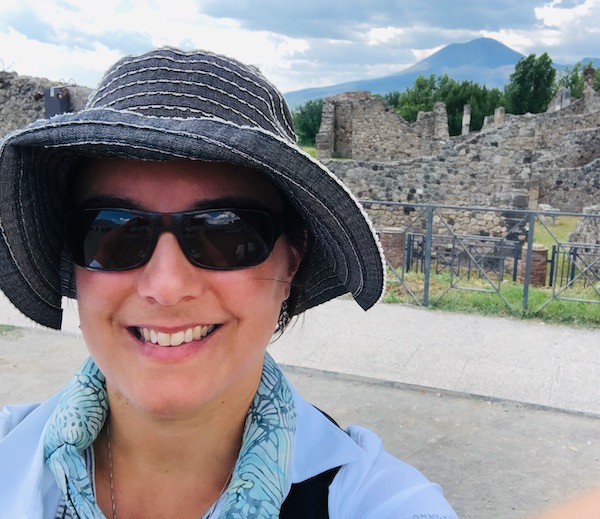
2022
The Archaeological Institute of America is pleased to bestow one of the two First Prizes for the 2022 Graduate Student Paper Award to Dr. Cristina M. Hernández for her paper, “Balnea Aestiva, Balnea Hiemalia: Integrating Solar-Temporal Data to Understand the Use and Sensory Experience of Pompeian Domestic Baths” presented at last year’s virtual Annual Meeting.
The paper took a fresh look at domestic baths in Pompeii to argue that their construction deliberately took into account the benefits of solar heat and light in different seasons, as seen through case studies at the House of the Menander and the House of Giuseppe II. The author then used this position to explore the ways in which microclimates were cultivated through the alignment of domestic spaces, using solar-temporal data to provide a full investigation of the use of private baths throughout the year and to reconstruct the experience of using domestic baths in antiquity. The Committee particularly commends the original and painstaking collection of data upon which the argument was based, the impressive visuals so necessary to understanding the seasonal interplay of solar radiation and architecture, and the well-articulated conclusion.
We are delighted to honor Dr. Hernández with the Graduate Student Paper Award.
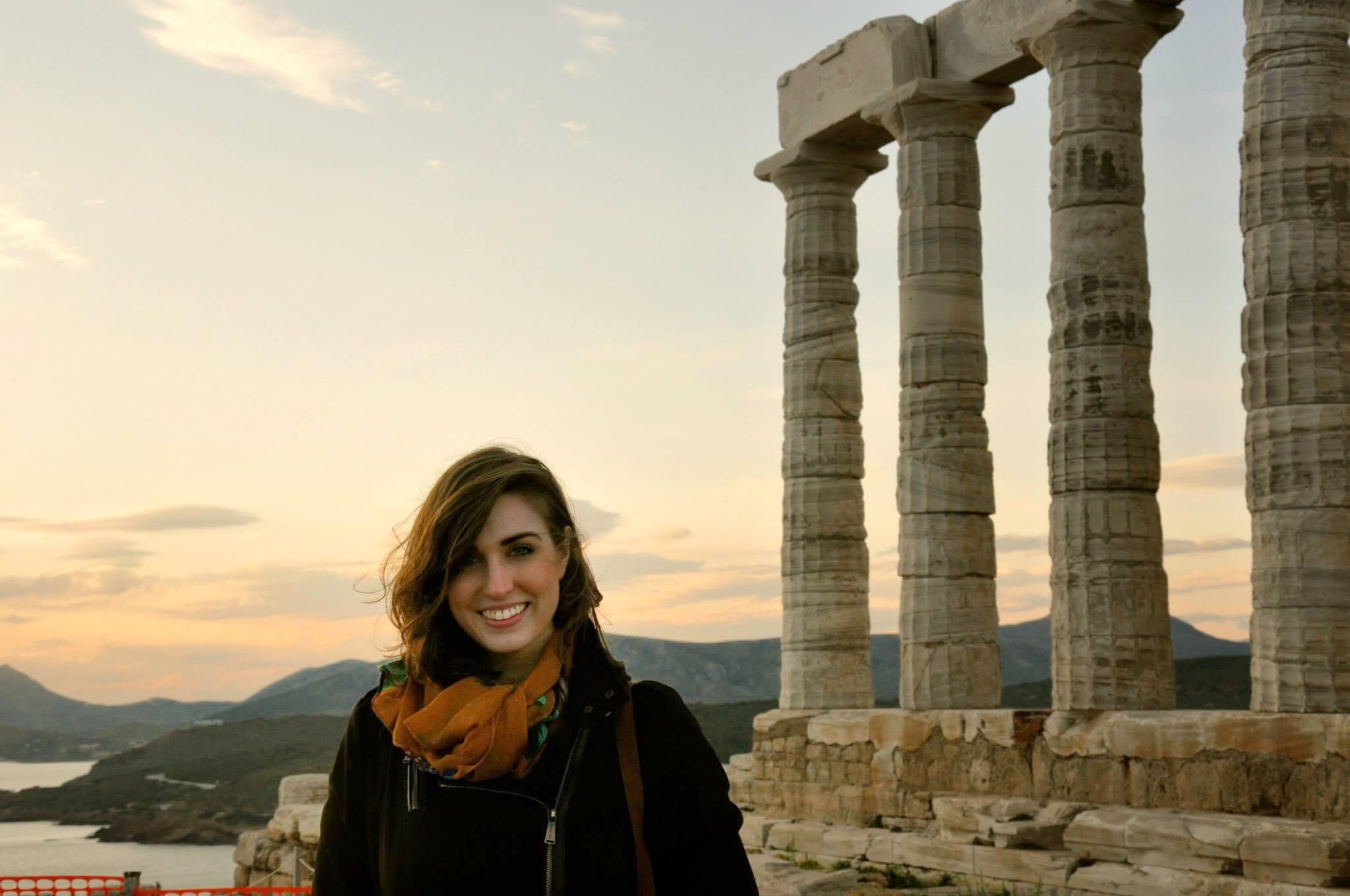
2021
The Archaeological Institute of America is pleased to bestow First Prize for the 2021 Graduate Student Paper Award to Tara Trahey for her paper, “The Brother-and-Sister Stele Sphinx has a vagina.” Taking the well-known Brother-and-Sister stele in the Metropolitan Museum of Art as its main subject, with reference to the material evidence in other examples of sculpted sphinxes from the 6th and 5th centuries BCE, Trahey makes the astute observation that the sphinxes depicted have clearly articulated female genitalia. This previously unnoticed detail allows Trahey to offer a rich argument connecting the sphinx with female daemons and the divinities kidnapping youths depicted in other Greek funerary monuments and vase painting. This research, which suggests a protective dimension to sphinx imagery, has implications for the interpretation of the mythic and iconographic traditions of the sphinx across many media, and particularly invites radical reconsideration of the function of sphinx imagery on funerary stelae, in sculpture, and in vase painting of the Archaic and Classical periods.
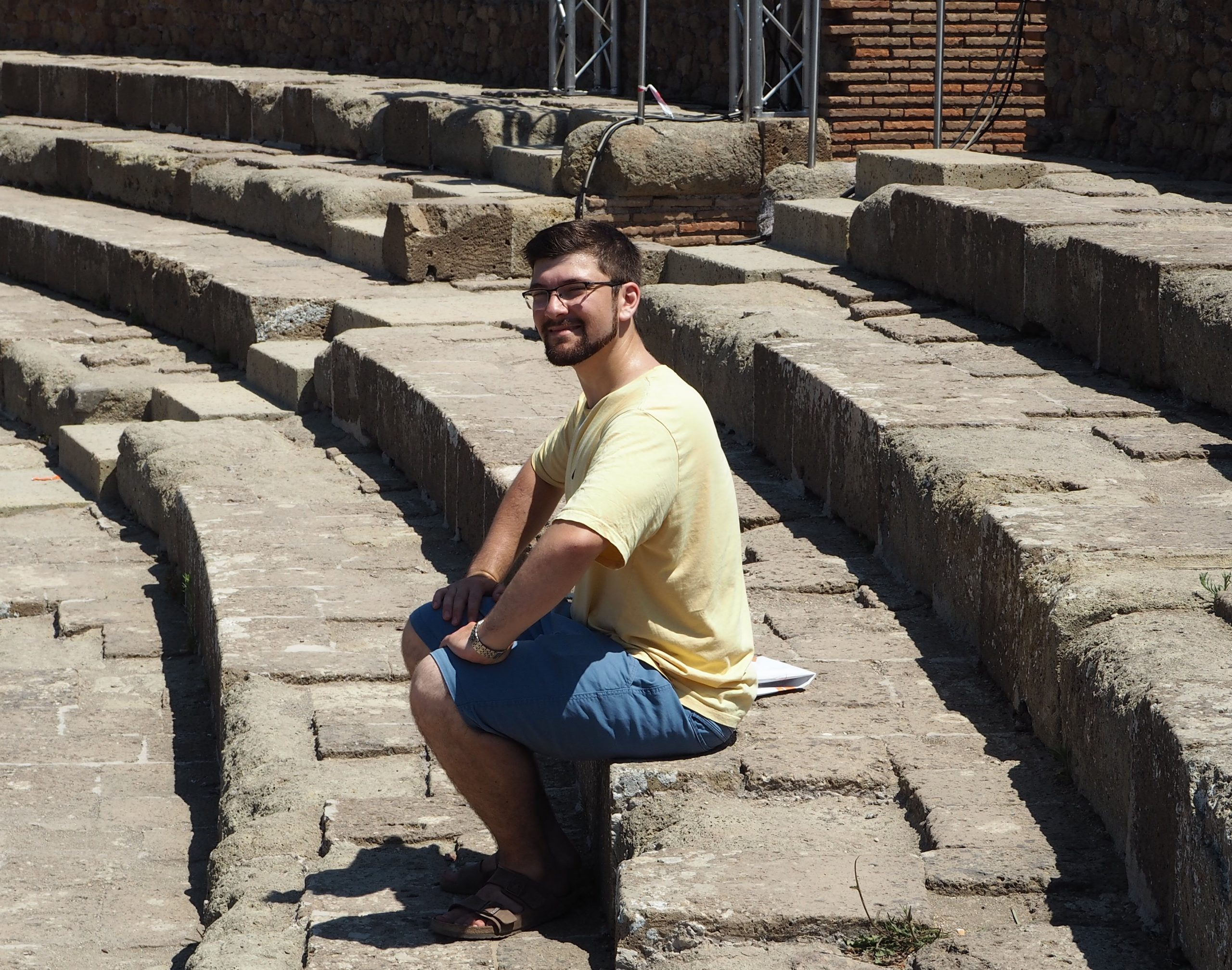
2020
The Archaeological Institute of America is pleased to bestow First Prize for the Graduate Student Paper Award to Drew Davis, a PhD candidate at the University of Toronto. His paper, “Municipal Public Spending and Italian Urbanization in the Late Republic,” drew on epigraphic evidence from the last two centuries of the Republic to challenge the notion that private elite expenditure drove most large public projects in this period. Looking outside of the city of Rome, Drew showed that public funds, in fact, provided the necessary resources for a great number of building projects and was far more common in the urban landscape of Italian communities than had been previously thought. This commendable paper contributes to significant recent scholarship on the process of Italian urbanization, particularly the autonomous role of and substantial contributions by individual Italian communities.

2019
The Archaeological Institute of America is pleased to award First Prize for the Best Graduate Student Paper Award to Cai Thorman of the University of California, Davis, for her paper “Matrilineal Lineage in Cult for Hellenistic Queens.” In her paper, she presented an admirable and innovative study of the use of the Hellenistic royal title basilissa, drawing upon a broad range of numismatic and textual data. Thorman’s study introduced the possibility that, beyond simply conferring royal status or conveying the entitlement to receive cult, the title basilissa might be applicable only to women whose lineage could be connected specifically to a single common matriline. Thorman’s work may have significant implications for our understanding of Hellenistic political and social histories.
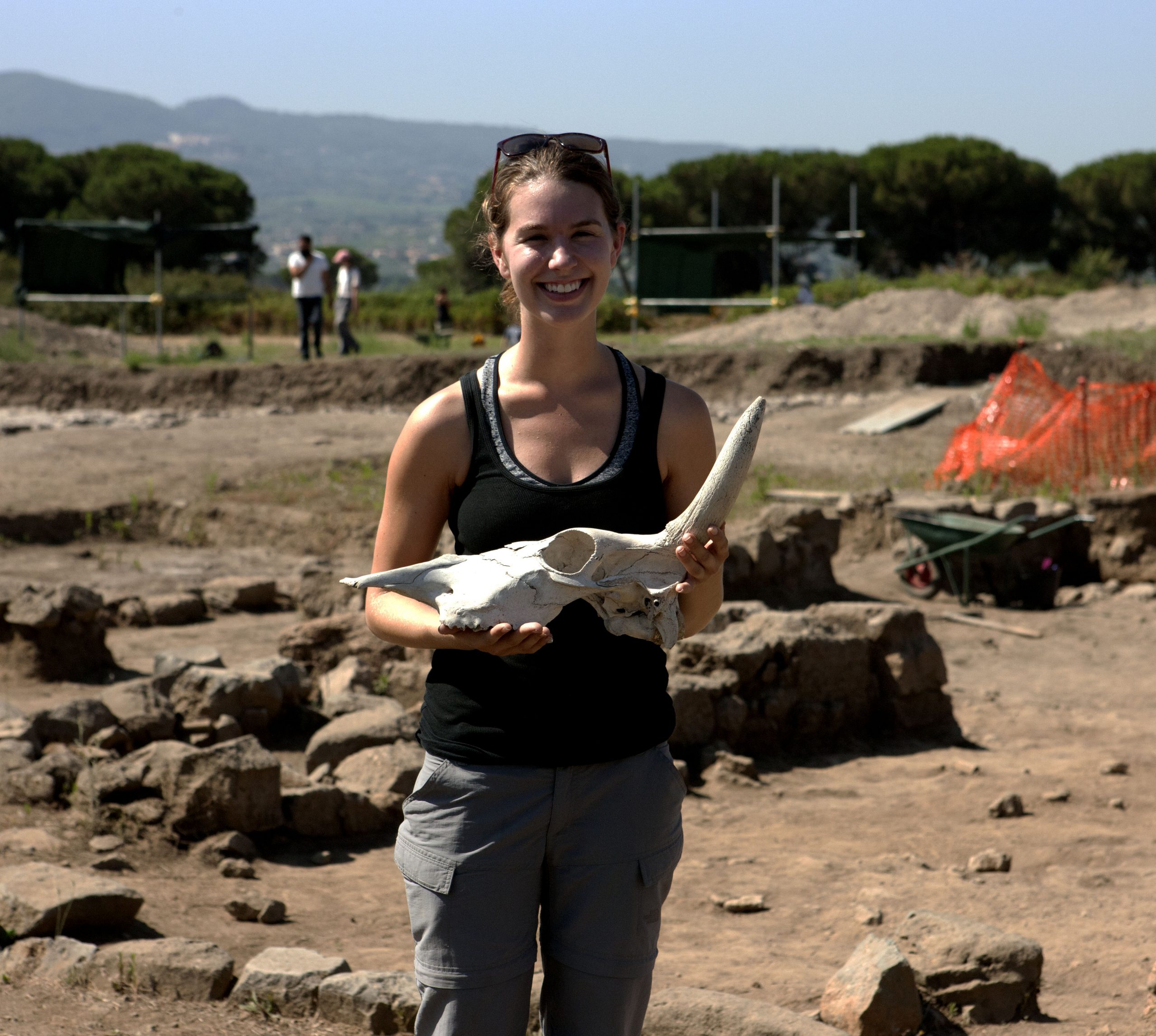
2019
The Archaeological Institute of America is pleased to award an Honorable Mention for the Best Graduate Student Paper Award to Victoria C. Moses of the University of Arizona, for her paper “Powerful Pups: Dog Sacrifice in Early Rome, a Case Study from the Area Sacra di Sant’Omobono.” In her paper, Moses presented a new analysis of faunal evidence from Sant’Omobono, a very important sacred site in the center of Rome that has wide ranging implications for how we view cult practice in the Roman world. Moses showed that the common occurrence of skeletal dog remains at the site shows evidence for ritual sacrifice and suggests that cult practice during the foundational period in Rome differed from what becomes the norm later.
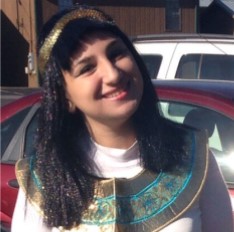
2018
Middle Tennessee State University
Ms. Abdelsalam’s paper, “Approaches for Protecting Cultural Heritage Sites: Mallawi Museum Case Study” presented a well-researched and creatively designed public archaeology project to reshape entrenched sentiments about local cultural heritage in Mallawi, Egypt (ancient Hermopolis).
Ms. Abdelslalam’s project integrated living history –in the form of actors speaking to visitors at the regional tombs– with community craft days at the Mallawi museum to showcase the connections between craft traditions past and present, from weaving and basket making to pottery production. Although largely targeting school age children, the blend of approaches reached a broader demographic, including adult business owners. Ms. Abdelsalam’s innovative approach circumvented thorny issues of religious identity and ethnicity to focus instead upon the ways in which the ancient and modern communities were connected by agricultural traditions and craft practice. In this way, her work offers a successful model for future outreach programs among local communities.
For her outstanding work in the protection of cultural heritage, one of the core missions of the Archaeological Institute of America, Heba Abdelsalam well deserves the AIA’s 2018 Graduate Student Paper award.
2017
2017
2016
2016
2015
2015
2014
2013
2012
2012
2011
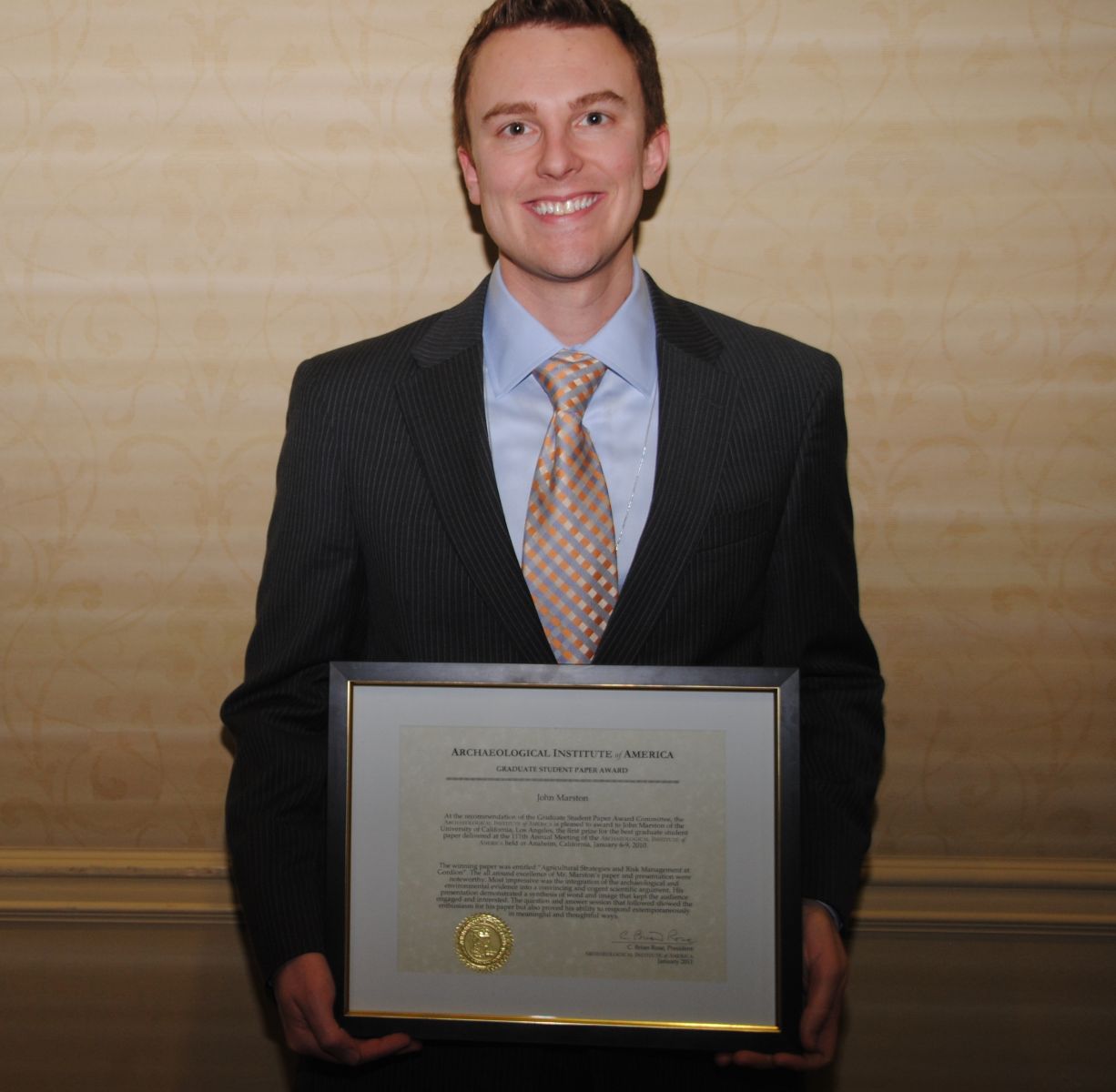
2010
At the recommendation of the Graduate Student Paper Award Committee, the Archaeological Institute of America is pleased to award to John Marston of the University of California, Los Angeles, the first prize for the best graduate student paper delivered at the 111th Annual Meeting of the Archaeological Institute of America held in Anaheim, California, January 6-9, 2010.
The winning paper was entitled “Agricultural Strategies and Risk Management at Gordion”. The all around excellence of Mr. Marston’s paper and presentation were noteworthy. Most impressive was the integration of the archaeological and environmental evidence into a convincing and cogent scientific argument. His presentation demonstrated a synthesis of word and image that kept the audience engaged and interested. The question and answer session that followed showed the enthusiasm for his paper but also proved his ability to respond extemporaneously in meaningful and thoughtful ways.
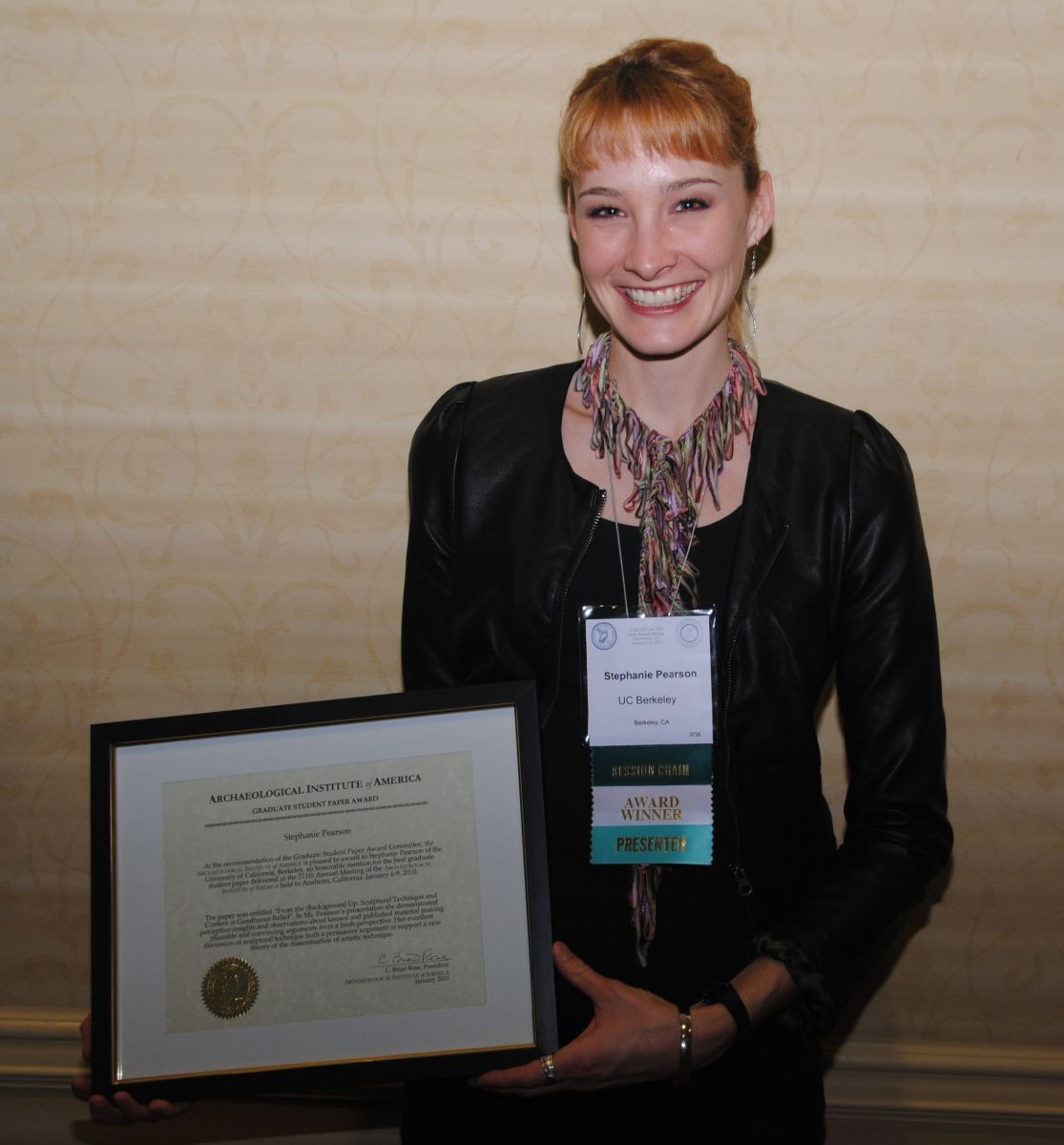
2010
At the recommendation of the Graduate Student Paper Award Committee, the Archaeological Institute of America is pleased to award to Stephanie Pearson of the University of California, Berkeley, an honorable mention for the best graduate student paper delivered at the 111th Annual Meeting of the Archaeological Institute of America held in Anaheim, California, January 6-9, 2010.
The paper was entitled “From the (Back)ground Up: Sculptural Technique and Content in Gandharan Relief”. In Ms. Pearson’s presentation she demonstrated perceptive insights and observations about known and published material making plausible and convincing arguments from a fresh perspective. Her excellent discussion of sculptural technique built a persuasive argument to support a new theory of the dissemination of artistic technique.
2009
At the recommendation of the Graduate Student Paper Award Committee, the Archaeological Institute of America is pleased to award to Marcie Handler of the University of Cincinnati, the first prize for the best graduate student paper delivered at the 110th Annual Meeting of the Archaeological Institute of America held in Philadelphia, January 8-11, 2009.
The winning paper is entitled “Chicken Soup for the Soul: New Evidence for the Practice of Magic in Hellenistic Athens”. Ms. Handler’s paper was a lucid and lively presentation of personal ritual. The combination of ceramic, faunal, and epigraphic evidence made for an entirely convincing interpretation and one that provided great and original insight into ancient curses in what is to date a unique social context. Her thorough command of the evidence and her dynamic presentation should result in a significant publication.
2009
At the recommendation of the Graduate Student Paper Award Committee, the Archaeological Institute of America is pleased to award to Panagiota A. Pantou of the University at Buffalo–The State University of New York, the first prize for the best graduate student paper delivered at the 110th Annual Meeting of the Archaeological Institute of America held in Philadelphia, January 8-11, 2009.
The winning paper is entitled “Mycenaean Dimini in Context: Discussing Settlement Types and Socioeconomic Complexities in Late Bronze Age Greece”. In this paper, Ms. Pantou demonstrated a thorough and professional presentation of evidence that was both compelling to those well versed in the subject and easily understood by non-specialists. Her offering of a new paradigm for Bronze Age economic and political organization based solely upon data from excavation challenged beliefs currently held and did so in a persuasive but non-confrontational way. Such work is how scholarship should be and displays great promise for publication.
2008
At the recommendation of the Graduate Student Paper Awards Committee, the Archaeological Institute of America is pleased to award to Stephan Zink of University of Pennsylvania, the first prize for the best student paper delivered at the 109th Annual Meeting of the Archaeological Institute of America held in Chicago, January 3-6, 2008.
The winning paper is entitled “Augustus’ Temple of Apollo on the Palatine: A New Reconstruction.” This paper demonstrated the qualities that the committee seeks in evaluating graduate student presentations. It was based on original observation of an important monument and was succinct and lucid in its presentation. Mr. Zink provided excellent graphics that forcefully and logically advanced the argument and were accompanied by a spoken presentation that balanced formal organization with informal rhetoric. This paper promises publication and exemplifies the highest of professional standards.
2007
At the recommendation of the Graduate Student Paper Awards Committee, the Archaeological Institute of America is pleased to award to Philip Sapirstein of Cornell University, the first prize for the best student paper delivered at the 108th Annual Meeting of the Archaeological Institute of America held in San Diego, January 4-7, 2007.
The winning paper is entitled “Potters and Disk Acroteria in Archaic Greek Architecture.” The committee praised Mr. Sapirstein for his highly original content, succinct and lucid presentation, and excellent graphics that forcefully and logically advanced the argument.
2007
At the recommendation of the Graduate Student Paper Awards Committee, the Archaeological Institute of America is pleased to give Mont Allen of the University of California at Berkeley honorable mention in the competition for the best student paper delivered at the 108th Annual Meeting of the Archaeological Institute of America held in San Diego, January 4-7, 2007.
His paper was entitled “Bridled in Bronze: The Prominence of the Horse on the Parthenon Frieze”. The committee recommended Mr. Allen for his concise and carefully illustrated argument of a controversial and much studied subject, his original interpretation, and his ability to provoke discussion.
2006
At the recommendation of the Graduate Student Paper Awards Committee, the Archaeological Institute of America is pleased to award to Elizabeth R. Macaulay of the Department of Archaeology, Oxford University, the first prize for the best student paper delivered at the 107th Annual Meeting of the Archaeological Institute of America held in Montreal, January 5-8, 2006.
The winning paper is entitled “The Role of Ollae Perforatae in Ancient Roman Garden Design and Ancient Plant Trade in the Vesuvian Region.” The committee praises Ms. Macaulay for the rhetorical and visual clarity of her presentation, its clear organization, the pursuit of the implications of the research across many dimensions of garden studies, and for the originality of its method and interpretation.
2006
At the recommendation of the Graduate Student Paper Awards Committee, the Archaeological Institute of America is pleased to give Nathan Elkins of the Department of Art History and Archaeology, University of Missouri-Columbia honorable mention in the competition for the best student paper delivered at the 107th Annual Meeting of the Archaeological Institute of America held in Montreal, January 5-8, 2006.
His paper was entitled “The Function and Distribution of the Flavian Colosseum Sestertii: Currency or Largess?” The committee recommended Mr. Elkins for the clarity and originality of his presentation, its careful organization and argumentation of the many dimensions of his study, and the excellent handout accompanying it.
Notifications